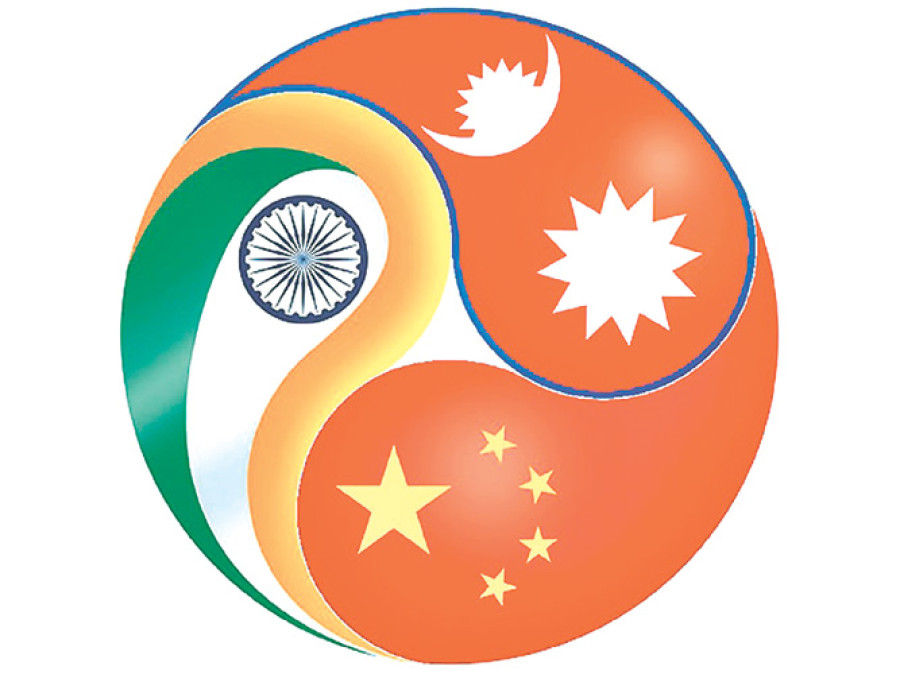Opinion
Openness and isolation
Nepali youths find themselves being pulled between two opposing global phenomena
Saurav Raj Pant
Nepali youths are at a crossroads and find themselves pulled between two opposing global phenomena—openness and isolation. From London to Washington, social, political and economic aspects of the post-1945 world are being rearranged. The rise of India and China in the global sphere is making the 21st century very sensational. Nepal is ranked 96th in the Global GDP (PPP) list. Even the economy of the city of Mumbai is 13 times larger than Nepal’s. Kathmandu’s intelligentsia takes the side of India or China whenever there is a debate, and many spew strong words against India.
Nepal as a diplomatic hub
But the reality is different. Almost every member of Kathmandu’s elite has close familial, religious and financial ties with Delhi. Their actions endanger the livelihoods of young people in Karnali who have to hop across the border to India daily to do menial work. The Nepali passport is the seventh weakest in the world. Nepali passport holders are allowed visa free entry in only 37 countries, with most of them in Africa. Many Nepalis are unaware that the world’s economic centres have come to our doorstep (Delhi and Beijing).
There is a saying in the Western media, “If you want to get into the Ivy League, go to Africa and volunteer.” That needs to be revised a little bit. Now they should be saying, “If you want to get into the Ivy League, go to Nepal and volunteer.” Nepal has the potential to become a sacred place for international relations. The country should take the lead to take advantage of its buffer state status and turn itself into the world’s new diplomatic hub. Nepal has the potential to become the new Geneva.
The Great Game of the 19th century, when Russia and Britain engaged in a political and diplomatic contest over Afghanistan, and Central and South Asia, has now been replaced by lopsided relations between two Asian giants, India and China. For China and India, the 1990s presented a period of great economic transformation and revival of influence. India is the largest geopolitical power in South Asia. The combined economies of the other seven countries in the region—Pakistan, Sri Lanka, Maldives, Bangladesh, Nepal, Bhutan and Afghanistan—do not even amount to half of India’s.
Triangular partnership
The three old imperial powers in Asia—India, China and Japan—are in some way or another rivals to each other. India and Japan have a somewhat balanced relationship. Most Western international pundits are critical about this three-way relationship. China’s efficient government and global rise in trade helped to pull millions of its people out of poverty. India’s rise in the global market as an information communications expert and its export-oriented growth have earned it a place in the global economy charts. Japan is a prominent example of post-war countries and has emerged as one of the key players in Asia in technology, economy and the Human Development Index. Whatever the reason, Nepal should be a bridge in the triangular partnership between India, China and Nepal.
The post-1990 period was a golden time for liberalism, but Nepal was unfortunate enough to have two kings in the same jungle—the king and the people’s elected government. In theory, there was multiparty democracy; and decentralization should have happened as a matter of course, but it did not. In contrast, there was a highly centralised system of government, which didn’t allow economic activity to spread to places like Karnali.
We should understand that liberalism in Nepal is the ultimate path for rapid development including a revised version of our foreign policy. The Non-Aligned Movement (NAM) is an obsolete idea, and we need a new one which will address the Modi era in the south and Xi Jinping’s rise in the form of the One Belt One Road initiative in the north. Globalisation hasn’t stopped for Nepal, rather it is the only way to catch the Beijing train in the north and India’s inter-connected rail and roads in the south. It is now time for contemplation, and because the Baby Boomer generation failed to give us great things, it is up to us Millenials to think.
Pant is an international relations enthusiast and development consultant




 8.12°C Kathmandu
8.12°C Kathmandu









%20(1).jpg&w=300&height=200)

